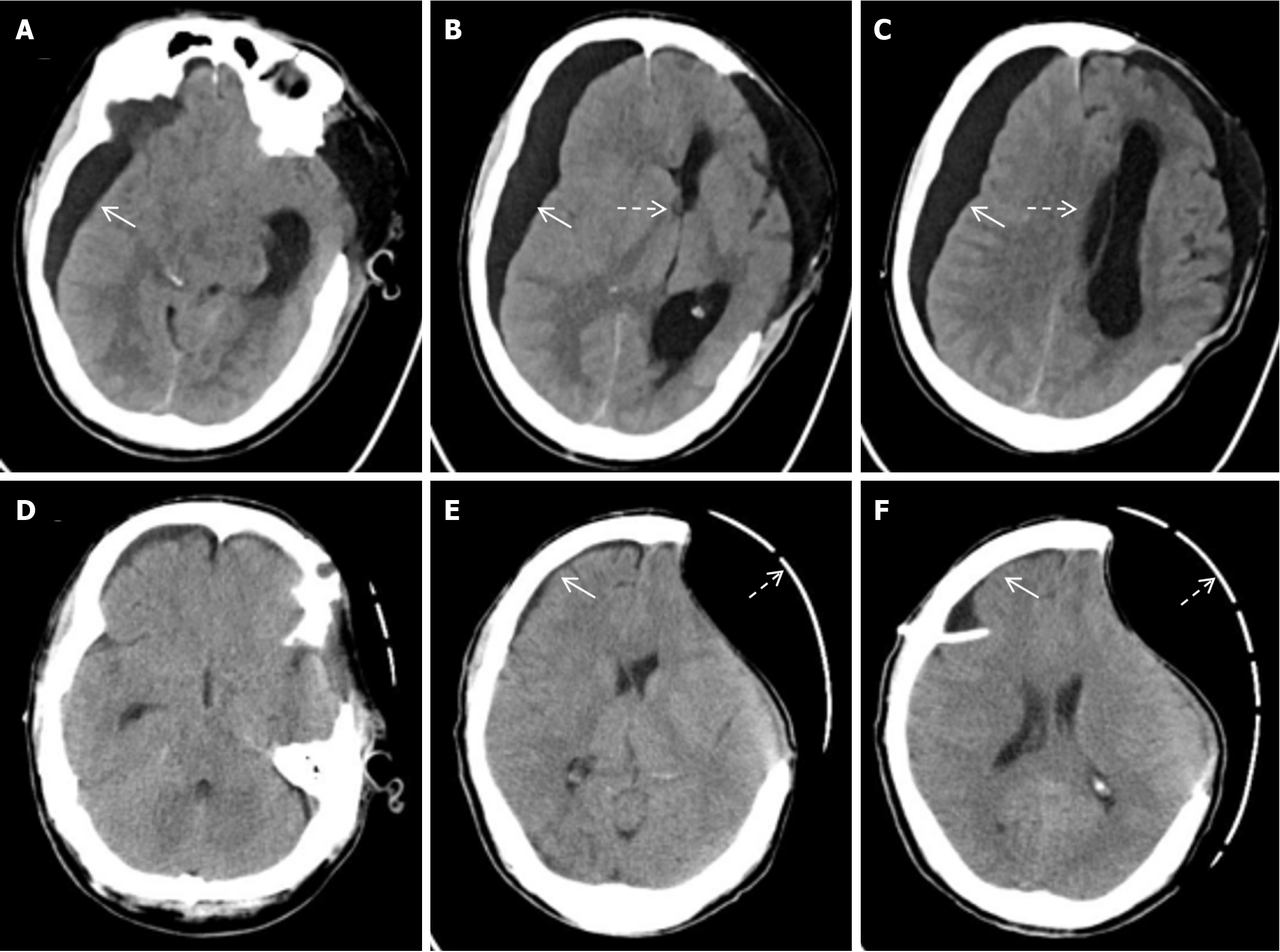Copyright
©The Author(s) 2025.
World J Clin Cases. Jun 16, 2025; 13(17): 103350
Published online Jun 16, 2025. doi: 10.12998/wjcc.v13.i17.103350
Published online Jun 16, 2025. doi: 10.12998/wjcc.v13.i17.103350
Figure 5 Computed tomography scan on day 32 after cranial decompression osteotomy.
A-C: On the 32nd day after decompressive craniectomy, a computed tomography scan was performed again, and it was observed that there was a significant increase in subdural fluid accumulation on the right side compared to before (solid white arrow). The midline shifted again to the left and the right ventricle was significantly compressed (dashed white arrow); D-F: After the third subdural puncture drainage surgery, a 7-day follow-up examination showed that the right-sided subdural effusion had basically disappeared (white solid arrows), the midline was basically centered, and the compression of the right lateral ventricle improved (white dashed arrows represent 3D skull defect protective caps).
- Citation: Lin MJ. Intractable subdural effusion after decompressive craniectomy for traumatic brain injury: A case report. World J Clin Cases 2025; 13(17): 103350
- URL: https://www.wjgnet.com/2307-8960/full/v13/i17/103350.htm
- DOI: https://dx.doi.org/10.12998/wjcc.v13.i17.103350









